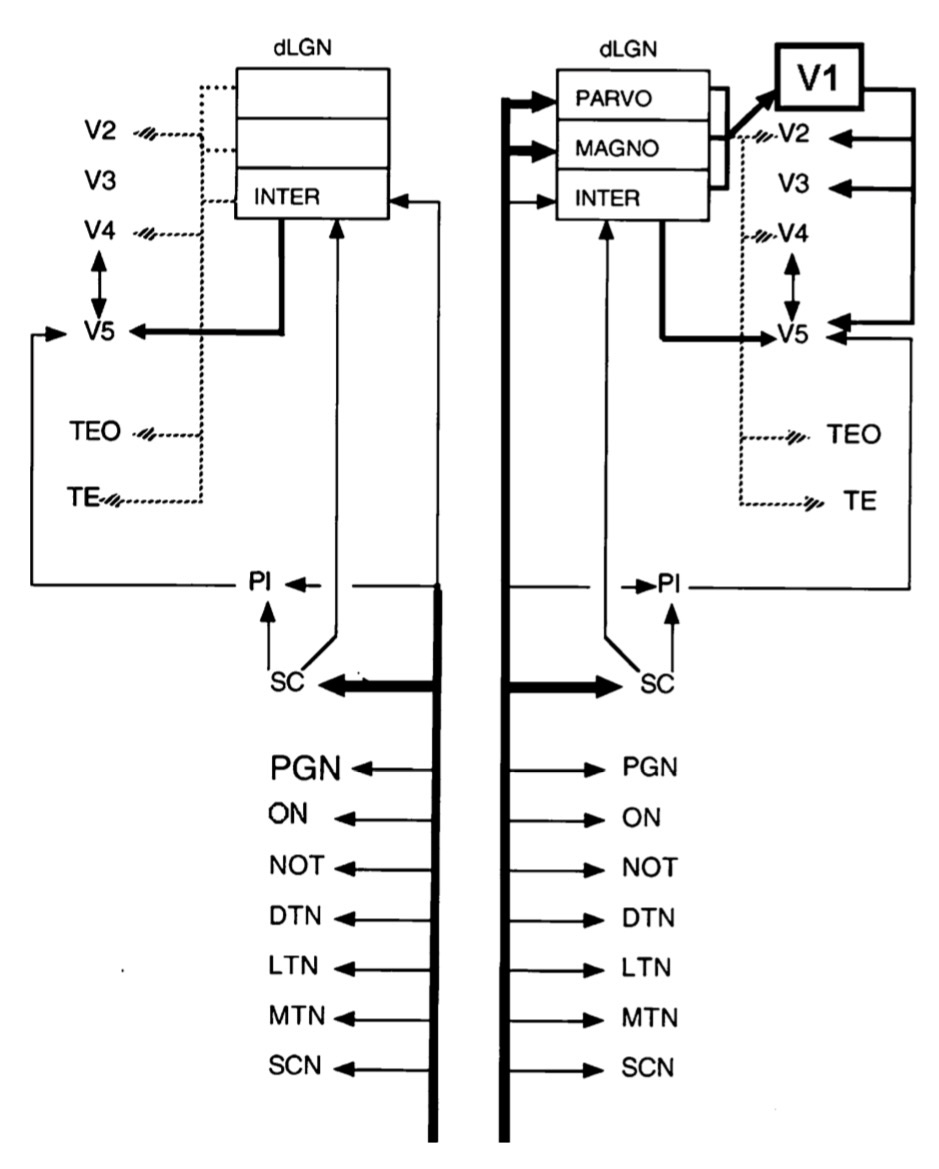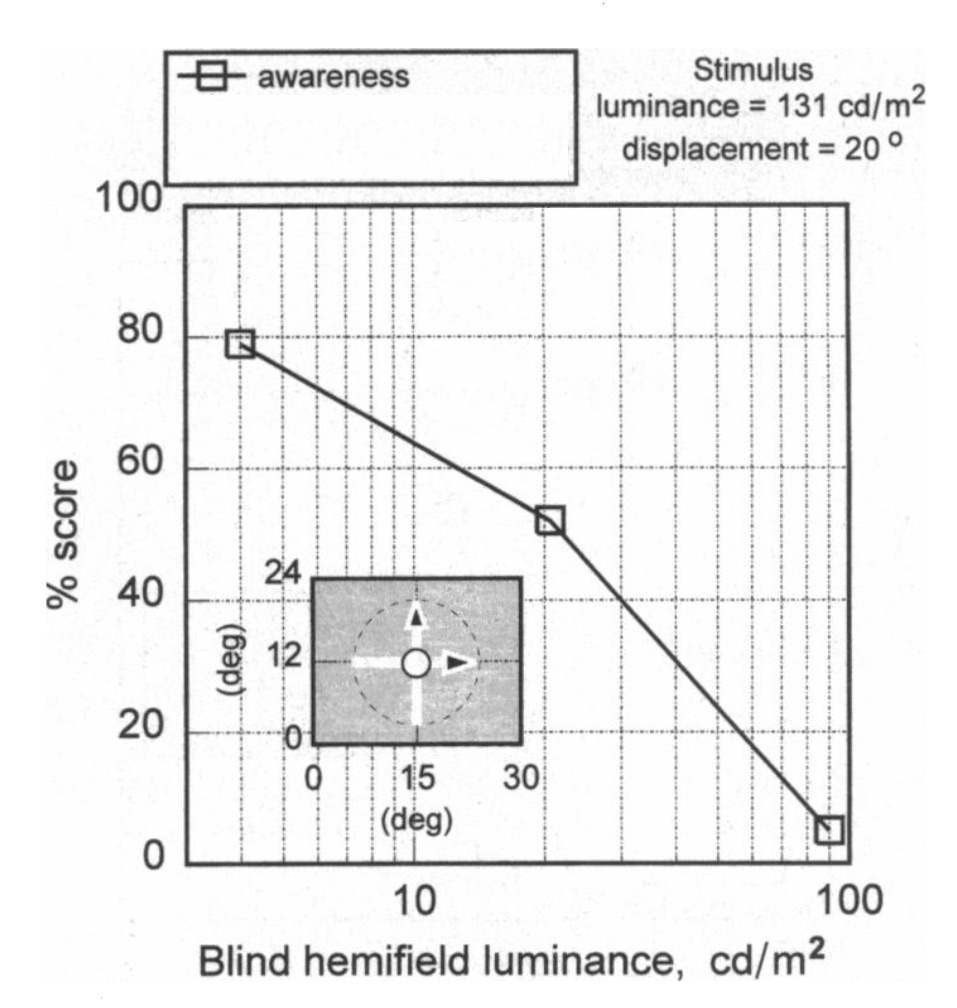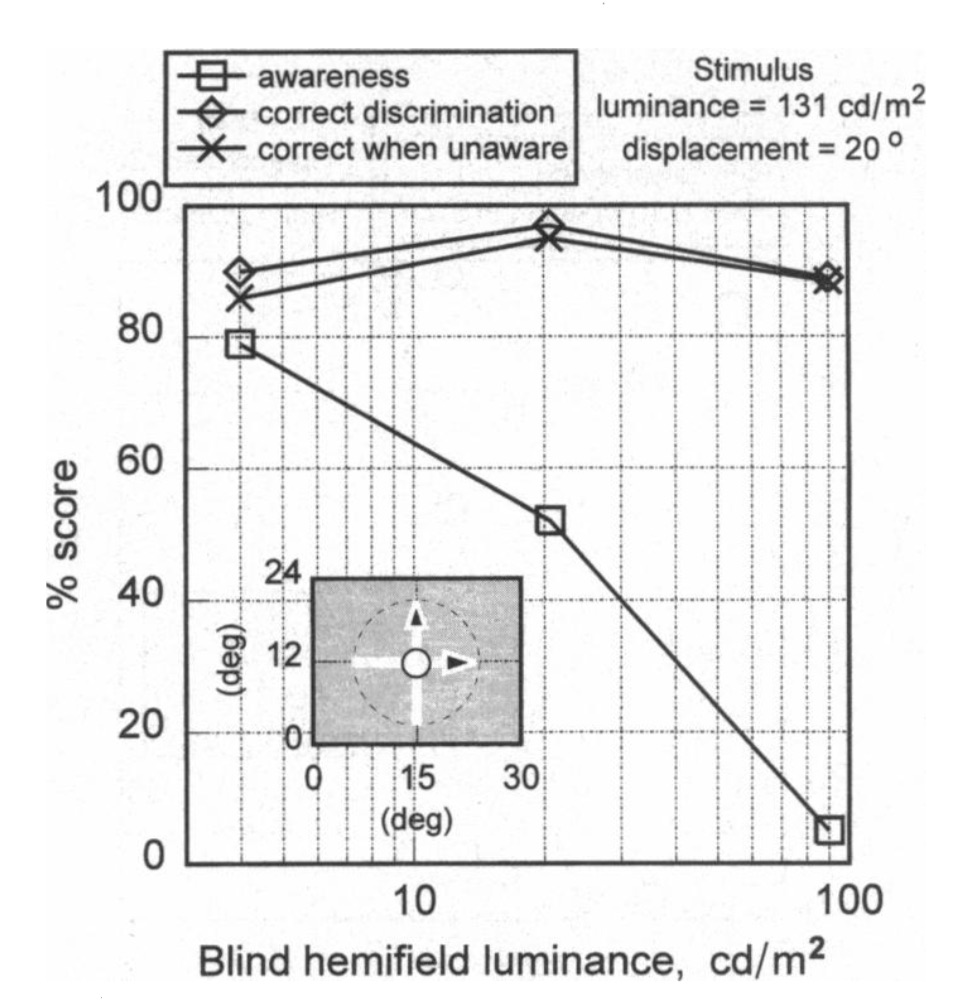Click here and press the right key for the next slide (or swipe left)
(This may not work on mobile or ipad. You can try using chrome or firefox, but even that may fail. Sorry.)
(If the slides don’t work, you can still use any direct links to recordings.)
also ...
Press the left key to go backwards (or swipe right)
Press n to toggle whether notes are shown (or add '?notes' to the url before the #)
Press m or double tap to slide thumbnails (menu)
Press ? at any time to show the keyboard shortcuts
Lecture 06:
Mind & Reality
\def \ititle {Lecture 06}
\def \isubtitle {Mind & Reality}
\begin{center}
{\Large
\textbf{\ititle}: \isubtitle
}
\iemail %
\end{center}
Here is are some flowers. You and I see these flowers and are thereby
aware of them. For you and me, seeing the flowers involves more than simply
acquiring visual information from them. For seeing the flowers is a way in
which we can be conscious of them.
Bees have some visual abilities and they can discriminate some colours as
well \citep{Kelber:2003hb}. So a bee could acquire some of the same visual
information that you and I can from a sensory encounter with these flowers. In
a basic sense, the bee sees the flowers just as you and I do. But is the bee
conscious of the flowers? Would a bee who saw the flowers thereby be conscious
of it?
It’s hard to know how you would even begin to answer this question. We now
know quite a lot about the behavioural, physiological and neural aspects of
bee vision (ibid.). But none of this seems to bear in any clear way on
whether in seeing things bees are being conscious of them.
The point I want to emphasise is not just that there is little consensus
on whether bees are perceptually conscious of objects. This is true but
there’s a deeper point. There’s little consensus even on the issue of how
we might go about investigating this question. This is a sign that we do
not understand what consciousness is.
Consciousness is unlike many other central features of our lives in this
respect. Other central features of human life, such as disease,
reproduction, cooperation, language and politics can be investigated. In
each case there are basic facts that most researchers accept and broad
agreement about methods of investigation. None of this holds in the case of
consciousness.
Don’t let my use of the bee give you the wrong impression. The key issue
isn’t whether the bee is conscious or not. That might be important for the
bee but it isn’t very important for understanding consciousness. The key
problem is not really to work out which things are conscious and which
things are not. The key problem is to understand what consciousness is well
enough that we can investigate it in some of the ways that we investigate
other phenomena.
I’m just using the bee to highlight our ignorance. The truth is that we
don’t understand what consciousness is well enough to study it.
If we are ever to understand what it is, we need to start thinking about
what roles consciousness plays. Why does it matter that we are sometimes
conscious?
\section{Intro to the Question about Awareness}
\emph{Reading:} §Kelber, A., Vorobyev, M., and Osorio, D. (2003). Animal colour vision – behavioural tests and physiological concepts. Biological Reviews, 78(01):81–118.
| topic | question |
| Acquaintance | How do your thoughts connect to the things about which you think? |
| Cognitive Penetration | How, if at all, do your thoughts influence your perceptions? |
| Awareness | What good is your perceptual awareness of the objects around you? |
| Sense & Reference | Why are some numerical identities informative? |
| Metaphysics | What is necessary for your personal survival? |
| Action | Of the events involving you, what determines which are your actions? |
| Induction | What is it for an observation to provide evidence for a scientific theory? |
What are the functions of perceptual awareness?
There are different forms of consciousness. For example we sometimes
contrast being conscious with being comatose. That’s not the sort of
consciousness I’m concerned with. Instead I want to focus on perceptual
consciousness of objects. When I talk about consciousness, I mean the sort
of consciousness that is often involved when you see an apple’s shape and
location. This is perceptual consciousness of objects.
What are the functions of feathers?
heat regulation
display
flight
Ok, now shelve the question about the function of perceptual awareness.
For now I hope you get that the question is nontrivial.
I want to suggest an indirect way of answering it via the topic of
perception without awareness.

A Secondary Subwaking Self?
\section{A Secondary Subwaking Self?}
\emph{Reading:} §Sidis, B. (1898). The psychology of suggestion. Appleton, New York.

What are the functions of perceptual awareness?
Simple Hypothesis
Perceptual awareness enables us to identify and report the letter.
k k k k
Against the Simple Hypothesis, consider
an older experiment, first reported in 1898 by Boris Sidis. Sidis showed
subjects cards containing a single printed digit or letter ...
“The subject
was placed at such a distance from the card that the character was far
out of his range of vision. He saw but a dim, blurred spot or dot” (1898:
170).
In fact, “subjects often complained that they could not see
anything at all; that even the black, blurred, dim spot often disappeared
from their field of vision” (1898: 171). Some people said “that they
might as well shut their eyes and guess” (1898: 171).
CHAPTER XVII, The Intercommunication of the Two Selves
However, when Sidis
asked his subjects to name the characters on the cards, their responses
were correct more often than would be expected if they were just
guessing. This is surprising, because it’s natural to assume that what
you consciously see determines what you write down; the Sidis’ results
show that this isn’t always true.
‘the presence within us of a secondary subwaking self that perceives things which the primary waking self is unable to get at’
\citep[p.~171]{sidis:1898:suggestion}.
Sidis, 1898 p. 171
Apparently, Sidis interpreted these and
related experiments as revealing “the presence within us of a secondary
subwaking self that perceives things which the primary waking self is
unable to get at” (1898: 171). In other words, it isn’t you who is
responsible for writing down the letters at all: it is another person who
shares your body and sees things you don’t.
Postulating a secondary self seems to make these results more, not less, confusing.
Not many people would accept Sidis’ suggestion, but it does show how
radically the discovery of nonconscious causes of action undermines a
very intuitive idea about how consciousness and action are related.
Ordinarily we think that we act on what we consciously see. This is bound
up with the sense we have of being in control of what we do, and of
knowing what we are doing. If some actions are based on information we
don’t even know we have, there is a sense in which these actions are not
our own. So you can see why Sidis thought he had discovered a second
person within his own body.
Natural thought is that there are many perceptual processes which do not involve
awareness at all ...
Objection
Sidis’ subjects are not perceptually aware of the letter but can identify and report it.
So we are left with the question ...
/ex/TorF/qq/Sidis aims to show that there can be awareness without perception.|Sidis aims to show that there can be perception without awareness.
\section{Blindsight}
\emph{Reading:} §Cowey, A. (2010). The blindsight saga. Experimental Brain Research, 200(1):3–24., §Marcel, A. J. (1998). Blindsight and shape perception: Deficit of visual consciousness or of visual function? Brain, 121(8):1565–1588., §Weiskrantz, L., Barbur, J. L., and Sahraie, A. (1995). Parameters affecting conscious versus unconscious visual discrimination with damage to the visual cortex (V1). Proceedings of the National Academy of Sciences, 92(13):6122–6126., §Shea, N. and Frith, C. D. (2016). Dual-process theories and consciousness: The case for ‘Type Zero’ cognition. Neuroscience of Consciousness, 2016(1).

exercise (will be useful later): point at the dot

exercise (will be useful later): point at the dot
What are the functions of perceptual awareness?
Simplest Idea:
Perceptual awareness enables control of action.
Ex. You can point at the dot because you are visually aware of it.
Blindsight is ‘the ability
of patients with absolute, clinically established, visual field defects
caused by occipital cortical damage
to detect, localize, and discriminate visual stimuli
despite being phenomenally visually unaware of them’
\citep[p.~3]{cowey:2010_blindsighta}
Cowey, 2010 p. 3

Blindsighted people have a region of their visual field in which they have
no conscious visual experience: to them it is as if they are blind. When
objects are presented to the affected area of their visual fields, they say
that they cannot see them. However, blindsighted people are able to act on
the basis of visual cues presented in this part of their visual field. For
example, here is a diagram of the complete visual field of a blindsighted
person.
The grey area represents the region affected by blindsight. This person can
only consciously see the word ‘bank’. However, if we ask her to define
‘bank’, she is very likely to think of bank as a financial institution
rather than as the kind of thing you find by a river:

this tendency is
reversed if we put the word ‘river’ in her blind field. Although she cannot
consciously see the word ‘money’, she does somehow discern the difference
between this word and the word ‘river’.
Caveat: ‘Unfortunately eye movements were not fully controlled or measured’
Cowey, 2010 p. 15

Blindsighted people can also act on the basis of their blindsight, even
though they do not consciously see anything. For example, if you flash a
point of light somewhere in the affected part of their visual field, they
see nothing. But if you ask them to point at the light by guessing where
it is, they can point with surprising accuracy. With practice,
blindsighted people can also reach for and pick up objects of different
shapes and sizes. In fact, someone with blindsight can perform many
non-reflexive actions guided by various kinds of visual stimuli in her
region of apparent blindness. Blindsighted people can discern pattern,
orientation, light wavelength, and the direction of moving objects. This
is surprising because the blindsighted person does not consciously see
the things she can point to or reach for. To her, the pointing and
reaching seems just like guessing.

So blindsight enables people to discriminate visual stimuli. But
consciousness is missing. To enjoy blindsight of objects is now a way of
being conscious of those objects.

How is blindsight possible? From a purely neurological point of view,
there is no mystery. Blindsight is caused by damage to the striate cortex
(also known as V1), an area at the back of the brain. The striate cortex
contains a kind of map of the visual field, and damage to part of the
striate cortex causes blindsight in the corresponding part of the visual
field. Although the striate cortex is the largest and most important
region of the brain for visual processing, it isn’t the only target for
optic nerves. Other parts of the visual system remain intact, so it is to
be expected that damage to the striate cortex should leave some visual
functioning intact. The brain damage that causes blindsight is completely
different from damage to the retina or to the optic nerves.

For this reason, the original puzzle about blindsight wasn’t that people with damage to the striate cortex could act on the basis of visual information; it was that damage to their striate cortices should have such a dramatic effect on their vision. Research into the striate cortex was first done on monkeys and dogs. Early experimenters looked at what happens when you remove this part of the brain. At first they thought the striate cortex was not involved in vision at all, because when you remove this part of the brain animals recover the ability to make fine visual distinctions. But around 1884, Luigi Luciani noticed that animals without a striate cortex suffer from what he called “psychic blindness”. He observed that:
although “visual sensation becomes perfect again [and] they are able to see minute objects, what they want is the discernment of things and a right judgement concerning their properties and their nature; they are deficient, in a word, of visual perception. For example, if small pieces of fig, mixed with pieces of sugar, are offered to them, they are incapable of choosing by sight alone but require to take the sugar in their hand and put it in their mouth in order to reassure themselves.” (Luciani 1884: 18)
More recent experiments with monkeys have found the same thing: “After six years [one monkey] still does not know a carrot when she sees one, nor apparently can she recognise my face, despite an excellent ability to locate visual events in her environment and to avoid obstacles by vision alone” (Humphrey 1972: 684).
It was therefore puzzling that humans with damage to the striate cortex
appeared to be completely blind in the affected regions of their visual
fields (Weiskrantz 1986: §1). Psychologists searched for residual visual
capacities in people with damaged striate cortex, and this led to the
discovery of the phenomenon called blindsight. They expected to find some
visual abilities, but they were surprised by what they found.
So there’s no mystery about blindsight from a purely neurological point
of view. But blindsight is mysterious from the point of view of the
person affected. As far as she is concerned, she doesn’t see anything. It
comes as quite a surprise to her that she can point at and reach for
things she can’t see: it must be a bit like discovering you’ve always had
eyes in the back of your head.
Same idea but with more pathways and visual areas
This is with V1 intact (V1 is top right)
Cowey, 2010 figure 2
This is with V1 taken out
Ok, let’s look at some data
Weiskrantz et al, 1995 figure 2
Ok, let’s look at some data
Weiskrantz et al, figure 2
Important thing here isn’t that we know the patient (G.Y.) is unaware;
in fact G.Y. reports awareness in many cases. The key is that whether
G.Y. reports awareness appears to be statistically unrelated to G.Y.’s
discrimination performance.
Two measures: 2AFC for orientation (vertical or horizontal).
And yes/no for awareness
G.Y. ‘was insistently instructed, and
frequently reminded, that he was to signal unaware only when
he had absolutely no sensation or feeling or experience of the
visual event, and he repeatedly confirmed his conformance
With this instruction’ \citep[p.~6122]{weiskrantz:1995_parameters}.
caption: ‘FIG. 2. Discrimination of horizontal vs. vertical movement (FR
paradigm), as a function of stimulus contrast. The subject had to
indicate (by guessing if necessary) whether the presented stimulus was
moving horizontally or vertically by pressing the appropriate response
key. He also had two commentary keys to use on every trial. Awareness
refers to the percentage of trials on which the subject pressed the aware
key. Correct when unaware refers to performance during those trials
when the subject pressed the unaware key. The luminance of the test
stimulus was held constant at 131 cd/m2, and background luminance
in the blind hemifield was altered systematically thus changing the
contrast of the stimulus. Speed was 150/s, and displacement was 200.
Note the relative stability of the high level of performance indepen-
dent of contrast but with a steep decline in percentage of aware
responses at high background luminance level when the contrast
decreased’
\citep[p.~6123]{weiskrantz:1995_parameters}
\citet{weiskrantz:1995_parameters} show that a blindsighted patient’s
visual discimination capacities are unaffected by whether the patient is
aware of stimuli.
Awareness makes no measurable difference to action.

recall earlier when I asked you to point at the dot ...
What are the functions of perceptual awareness?
Simplest Idea:
Perceptual awareness enables control of action.
Ex. You can point at the dot because you are visually aware of it.
Objection : Blindsight reveals that sometimes variations in perceptual awareness of the dot make no measurable difference to action.
At this point I was going to do
blindsight in normal subjects \citep{Kolb:1995vs}.
But there is a convicing failed replication of \citep{Kolb:1995vs}:
\citep{robichaud:2003_inducing}!!!
‘there is no clear case of a task for which consciousness is required’
[...] ‘It is misguided to think that the function of consciousness must consist in tasks that can only be performed with conscious representations’ \citep{shea:2016_dualprocess}.
Shea & Frith, 2016
/ex/TorF/qq/Blindsight is caused by retinal damage|Blindsight is caused by damage to the optic nerve
/ex/TorF/qq/Steve argued that evidence from subjects with blindsight supports the view that the function of perceptual awareness is to enable control of action|Blindsight reveals that sometimes variations in perceptual awareness of an object make no measurable difference to abilities to detect its orientation (or so Steve claimed in this section of the lecture).

Awareness: First Interim Conclusion
\section{Awareness: First Interim Conclusion}

conclusion
In conclusion, ...
What are the functions of perceptual awareness?
Simplest Idea:
Perceptual awareness enables control of action.
Objection 1 : Sidis’ subjects are not perceptually aware of the letter but can identify and report it.
Objection 2 : Blindsight reveals that sometimes variations in perceptual awareness of the dot make no measurable difference to action.
Objection 3 : ‘there is no clear case of a task for which consciousness is required’ (Shea & Frith, 2016)

















